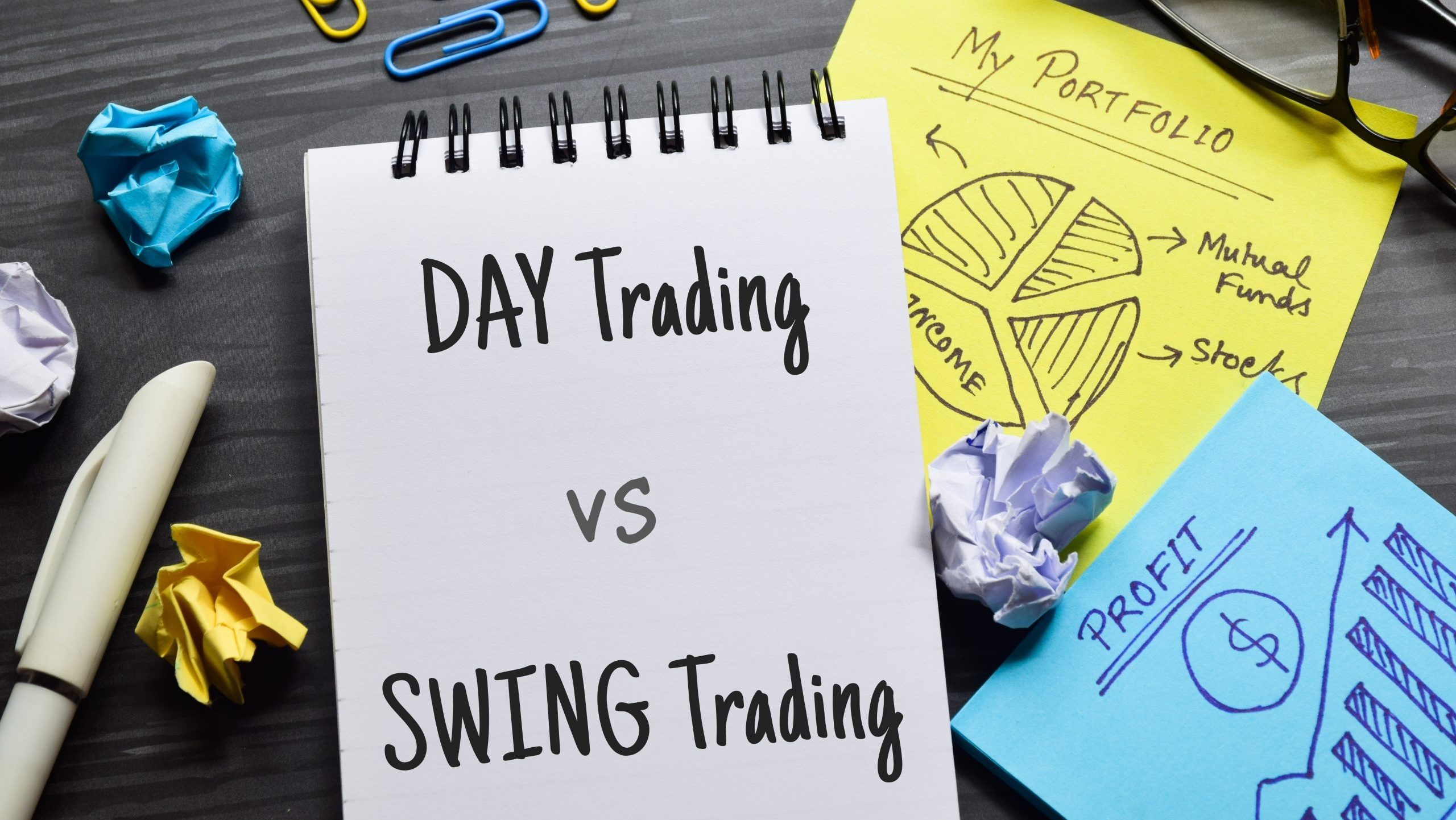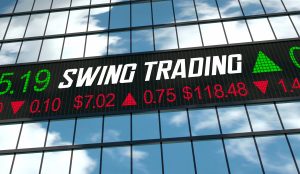
So you’re keen on trading, but you’re torn between day trading and swing trading, aren’t you? There’s no need to worry because this article is here to help you make an informed decision. This piece will take you through the significant distinctions that set these two trading styles apart. From the frequency of trades to the length of time you’ll hold onto your securities, these unique details will paint a vivid picture for you. Read on and make your next step in trading with confidence and insight!
Understanding Day Trading
Day trading is a style of trading where financial instruments are bought and sold within the same trading day. The main goal of day trading is to make quick profits from the small price movements of securities such as stocks, commodities, and currencies.
Concept of Day Trading
In day trading, traders aim to capitalize on the small price fluctuations that happen throughout the day. This approach requires meticulous analysis, quick decisions, and an ability to act promptly. The key point of day trading is that all positions are closed before the market closes for that trading day. It’s about rapid-fire buying and selling, making it a very dynamic and exciting form of trading.
Role of a Day Trader
As a day trader, your role is essentially that of a risk-taker. You aim to predict market movements based on intricate chart patterns, financial news, or other market indicators. Your day is filled with decision-making moments where you assess whether an asset will rise or fall in value over a very short time.
Typical Day of a Day Trader
A typical day of a day trader starts early, often before the market opens. This time is generally used to review trades from the previous day, analyze market news, and plan for the day ahead. Once the market opens, a day trader spends their time monitoring price movements, executing transactions, and managing ongoing trades. A key part of the day trader’s routine is constantly monitoring market conditions and making quick decisions.
Requirements for Day Trading
Day trading requires a significant investment of time, money, and effort. Traders need a substantial amount of capital, a robust trading platform, a high-speed internet connection, and a decent knowledge of market mechanics. They must also adhere to the “pattern day trader” rule, which requires maintaining at least $25,000 in their brokerage account.
Understanding Swing Trading
Swing trading is another style of trading. Unlike day trading that mainly focuses on short-term price movements, swing trading aims to profit from price changes that occur over a couple of days or even weeks.
Concept of Swing Trading
Swing trading is all about spotting ‘swings’ or cycles in the market. The goal is to enter a trade during the beginning of a price movement and exit once a significant change has occurred. As a swing trader, you’re not looking for the peak or the trough of a price swing, but rather for the bulk of the move.
Role of a Swing Trader
As a swing trader, you try to capitalize on short to mid-term market movements. Your role involves identifying trading opportunities using a mix of technical and fundamental analysis to forecast price swings. Your trades can last a day, a week, or even a month.
Typical Day of a Swing Trader
Unlike a day trader who needs to constantly monitor market fluctuations, a swing trader’s day isn’t as intense. Swing traders spend their time researching and planning their trades. They often analyze market trends during the non-market hours and place trades for execution when the market opens.
Requirements for Swing Trading
Swing trading requires a solid foundation in technical analysis and an understanding of market trends. As swing traders hold positions longer than day traders, they need to have ample trading capital to cover potential short-term losses. This trading style also requires patience and discipline to wait for the right trading opportunities to come along.
Time Frame in Day Trading vs Swing Trading
The fundamental difference between day trading and swing trading lies in the time frame of holding trades.
Duration of trades in Day Trading
In day trading, trades are completed within a single market day. Positions are opened and closed within hours or even minutes, aiming to capitalize on short-term price movements.
Duration of trades in Swing Trading
Swing trading, on the other hand, involves holding positions from a few days to weeks. Swing traders believe that these longer time frames can potentially yield larger profits as price changes are more significant.
Impact of Trade duration on the strategies
The duration of trades significantly influences the trading strategies you adopt. Day traders focus on minute-by-minute price movements and rely heavily on technical analysis tools. Meanwhile, swing traders combine technical analysis with fundamental analysis to make trading decisions over a longer time frame.
Risk and Return in Day Trading Vs Swing Trading
Both day trading and swing trading have their own levels of risks and returns which are important to understand.
Chances of Profit and Loss in Day Trading
Since day trading involves rapid buying and selling of securities, it does offer the potential for significant profits. However, the chances for substantial losses are equally high due to the volatility of the markets.
Return Rates in Day Trading
In day trading returns are typically smaller as traders profit from minute price fluctuations. The key to profitability in day trading lies in the volume of trades and the frequency.
Chances of Profit and Loss in Swing Trading
With swing trading, the potential for gains is higher as positions are held for longer, allowing traders to capture large price swings. However, the possibility of losses also increases with the length of time the position is held.
Return Rates in Swing Trading
Return rates in swing trading can be quite sizeable due to the opportunity to capitalize on significant price changes. However, it’s crucial to note that higher returns also involve higher risks.
Difference in Strategy between Day Trading and Swing Trading
Both trading styles employ different strategies depending on their time frames and risk tolerance.
Strategy employed in Day Trading
Day traders rely predominantly on technical analysis and chart patterns to predict price movements. Their strategies involve scalping (making numerous trades for small profits), range trading (buying at the low and selling at the high of a range), and high-frequency trading (using algorithms to trade).
Strategy employed in Swing Trading
Swing traders combine both fundamental and technical analysis. They often use trend indicators and oscillators to determine market momentum and trade in the direction of the trend until a price reversal signals the end of their trade.
Strategic Difference in both Trading Styles
Day trading is more analytical and focused on short-term chart patterns while swing trading involves a blend of both technical and fundamental analysis with a more significant focus on mid-term price trends.
Required Tools for Day Trading and Swing Trading
Having the right tools facilitates effective trading whether you are a day trader or a swing trader.
Tools required for Day Trading
Day traders need an advanced trading platform that offers real-time quotes, fast trade execution, and extensive charting capabilities. Given their reliance on technical analysis, day traders also need access to a wide range of technical indicators to assist their trades.
Tools required for Swing Trading
Swing traders, like day traders, also require a robust trading platform, along with tools for both technical and fundamental analysis. Swing traders often use tools like candlestick charts, technical indicators, and financial news platforms.
Skills Required in Day Trading and Swing Trading
Regardless of the trading style, there are certain skills that can enhance your ability to make profitable trades.
Skills needed by Day Traders
Day traders need to be quick thinkers, have excellent analytical skills, and make decisions promptly. They need a thorough understanding of chart patterns and indicators. Stress management and self-discipline are vital, as day trading often involves substantial financial risk.
Skills needed by Swing Traders
Skills required for swing trading include patience, strategic planning, and a good understanding of technical and fundamental analysis. Swing traders need to have the discipline to hold onto trades even during market fluctuations.
Impact of Market Volatility on Day Trading and Swing Trading
Market volatility can significantly impact both trading styles.
Role of Market Volatility in Day Trading
Day traders thrive in a volatile market as it provides them with ample trading opportunities. They leverage the intraday price fluctuations to make their profits.
Role of Market Volatility in Swing Trading
Swing traders have a more complicated relationship with market volatility. While they can profit from larger price swings, extreme market volatility can often disrupt their planned entry and exit points.
How Volatility Affects both Types of Trading
Market volatility presents opportunities and risks in both types of trading. While it enables traders to profit from price differences, it also increases the likelihood of losses. Profiting from volatility requires skill, experience, and a thorough understanding of markets.
Lifestyle and Emotional Aspect of Day Trading Vs Swing Trading
The differences between day trading and swing trading not only pertain to strategies, time frames, and risks but also affect the lifetyles and the emotional aspects of traders.
Lifestyle of a Day Trader
Day trading is often seen as an intense and demanding career choice. It involves long hours of work, continuous monitoring of market fluctuations, and making quick decisions. Day trading often demands high levels of focus and emotional control.
Lifestyle of a Swing Trader
Swing trading offers a more relaxed lifestyle compared to day trading. As swing traders hold trades longer, they do not need to be consistently glued to their trading platform. They have their trading strategies which allow them some flexibility
Emotional Challenges in Day Trading
Day trading can be a roller coaster of emotions as traders often have to handle winning and losing steaks within the same day. Stress management and emotional control are paramount to stay clear-headed and to stick to their trading strategies.
Emotional Challenges in Swing Trading
Swing trading, while less stressful than day trading, also comes with its own set of emotional challenges. Swing traders need patience and discipline to stick to their strategy even when the market is against them.
Conclusion: Choosing between Day Trading and Swing Trading
Choosing between day trading and swing trading primarily depends on personal preference, available time, financial resources, risk appetite, and trading skills.
Factors to consider when choosing a style
When choosing a trading style, one should consider the capital they are willing to invest, their risk tolerance level, the amount of time they can dedicate to trading, and their emotional control.
Personal characteristics suited for Day Trading
If you are someone who can handle rapid decision making, stay calm under pressure, and take risks, then day trading might be the right choice for you. Remember, successful day trading requires time, dedication, and a significant amount of practice.
Personal characteristics suited for Swing Trading
If you are someone who prefers a more analytical approach, has patience, and can hold onto trades for a few days to weeks, then swing trading is likely a better fit. Swing trading gives you the benefit of time which aids in thorough planning and analysis before making a trading decision.
In conclusion, both day trading and swing trading come with their unique set of benefits and challenges. Understanding these will help you decide which trading style best aligns with your personal and financial goals. Remember, practice and continuous learning are the keys to becoming a successful trader. Happy trading!





